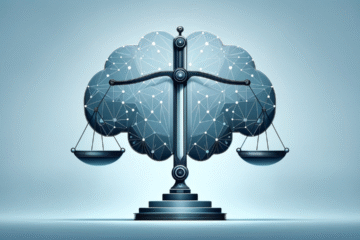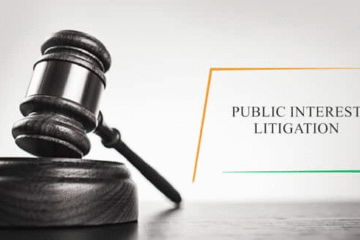
This article is written by Venesa Thomas Paul OF MIT WPU, an intern under Legal Vidhiya
ABSTRACT
While equality is guaranteed by Articles 14, 15, and 16 of the Indian Constitution, discrimination based on single factors, such as gender or caste, rather than their intersections, is largely addressed. People who experience multiple and overlapping forms of discrimination, such as Dalit women or queer tribal people, consequently frequently evade legal protection. Although discrimination on multiple grounds is prohibited by Article 15, it does not specifically acknowledge how these grounds may coexist. But recent rulings from the Supreme Court, like those in Navtej Singh Johar and Indian Young Lawyers Association, have started to represent a more inclusive, expansive view of equality that takes into account the lived realities of marginalized groups. The idea that intersectional experiences call for intersectional legal responses is becoming more widely accepted.
KEYWORDS
IntersectionalDiscrimination, Equality, Indian Constitution, Marginalized Groups
INTRODUCTION
Discrimination is frequently ascribed to independent, separately viewed factors like gender, caste, or class. Intersectional discrimination is the term used to describe the recognition of multiple grounds of discrimination.
Lawyer and civil rights activist Kimberle Crenshaw explains that discrimination against women does not occur in silos by citing the 1976 case of Emma Degraffenreid v. General Motors Assembly Division. It is frequently perceived to overlap with other types of discrimination, so a comprehensive approach is required to address this issue. Five African American women filed a lawsuit against General Motors in this case, alleging racial and gender discrimination. The Court ruled that the company’s female secretaries were not subjected to gender discrimination, and it even refuted the allegations of racial discrimination because the company also hired African American men.
The Court looked at the two charges of gender and racial discriminations separately and did not consider the possibility of women of colour being discriminated on more than one ground together. The experience of being discriminated against owing to your association with more than one identity was coined by Crenshaw, as ‘intersectionality’. A term which has in the recent past become viral explores the complex and cumulative ways in which the effects of multiple forms of discrimination combine, overlap or intersect.[1]
Furthermore, it is essential to comprehend the various kinds of intersectional identities that are present such as:
Discrimination based on caste along with gender can be seen in the case of a Dalit woman, who faces gender-based violence differently than upper-caste women and caste-based differently than Dalit men. A Muslim with a disability may experience exclusion in both religious and secular settings; this is frequently overlooked in discussions of disability rights. When it comes to employment, healthcare, and education, an Adivasi woman from a low-income family may experience multiple forms of discrimination. It is possible for a Dalit queer person to feel excluded from both Dalit political movements and the mainstream LGBTQ+ community.
INTERSECTIONAL JURISPRUDENCE IN INDIA
Although India’s Constitution provides a strong foundation for equality and non-discrimination, it has historically addressed discrimination based on individual factors (such as gender or caste) rather than intersections. The main provisions work as follows:
By virtue of Articles 14[2], 15[3], and 16[4], the Indian Constitution offers a solid legal basis for guaranteeing equality and outlawing discrimination. The State is prohibited from denying anyone equality before the law or equal protection under the law, according to Article 14. According to court interpretation, this clause upholds both formal and substantive equality, invalidating arbitrary and irrational classifications. Though Article 14 advocates for equality in general, it usually only addresses discrimination on one axis, like gender or caste, rather than how they intersect.
Discrimination by the State on the basis of religion, race, caste, sex, or place of birth is expressly forbidden by Article 15. Additionally, it gives the state the authority to provide special treatment for women, children, and members of socially and educationally disadvantaged groups. This article maintains a compartmentalized view of identity even though it offers a basis for affirmative action. For example, a Dalit woman might experience discrimination on the basis of both gender and caste at the same time, but the law only addresses these identities separately rather than in their intersectional form.
Equal opportunity in public employment and a ban on discrimination based on similar grounds are two ways that Article 16 advances the equality principle. Similar to Articles 14 and 15, it fails to specifically take into consideration the complex experiences of people who are members of multiple marginalized groups.[5]
Moreover, even though they are not legally binding, the Directive Principles of State Policy direct the government to advance equality, justice, and the well-being of all people, especially the underprivileged. Although they are not legally binding, these principles offer an ethical and policy-oriented framework for incorporating intersectional justice. All things considered, even though the constitutional framework offers useful instruments to fight discrimination, it mostly sticks to a one-axis strategy and does not adequately recognize or address the realities of intersectional discrimination that many Indians face.
Intersectionality in the Indian Judicial System
In the Patan Jam Vali v. State of A. P[6]. case, Justice DY Chandrachud presents the intersectionality perspective. According to him, pain is a subjective experience that can only be accurately assessed after a thorough examination of all the variables involved, such as the various oppressive values that combine to create a complex web of subordinate circumstances for the less fortunate. The principles of equality, liberty, and fraternity values that are occasionally incompatible with one another—are the foundation of the system of organized social relations. Justice serves as a mediator between opposing ideals. Although the law upholds our obligations, it ignores the basis of moral justice. Therefore, the law can be deemed unjust on this basis. In a number of cases, Indian courts have flagrantly disregarded the idea of intersectionality and instead rendered decisions based solely on the precise language of Article 15(1)[7] of the Indian Constitution, which forbids discrimination and classifications based on religion, race, caste, sex, and place of birth. According to the ruling in Mahadeb v. Dr. BB Sen[8], discrimination does not exist when a law includes multiple add-ons in addition to sex. But for every instance that didn’t appear to look beyond the written word, there is another that did.
The idea of intersectionality was used to comprehend the comprehensive protection against discrimination provided by the Constitution in the landmark case of Navtej Singh Johar v. Union of India[9], which decriminalized consensual sex between all adults, including homosexuals. A formalistic interpretation of Article 15 will not be consistent with the rationale behind its inclusion, as noted by Justice DY Chandrachud. According to him, a limited interpretation of the article ignores how sex discrimination is intersectional and not distinct from other forms of discrimination.[10]
LAWS FOR PROTECTION FROM INTERSECTIONAL DISCRIMINATION
Indeed, India has a diverse range of laws pertaining to protecting women and prosecuting offenses against them. However, the failure to comprehend the various levels of discrimination has frequently led to Dalit women’s ongoing persecution. Women who fall under these categories are granted specific protections under the Scheduled Caste Scheduled Tribes (Prevention of Atrocities) Act, 1989[11], which is part of the current legal framework. It makes it illegal to purposefully and without a woman’s consent engage in sexual contact with a scheduled caste or scheduled tribe member. It is also illegal to use sexually suggestive words, actions, or gestures toward these women. In addition, this law makes it clear that a woman’s past sexual encounters, even with the perpetrator, cannot be used to infer consent or in any way lessen the severity of the crime, given the history of “slut-shaming” women to defend their sexual assault. Even with these protections, women from lower castes still face a great deal of stigma that prevents them from accessing the legal system. The intersectional perspective needs to be given the weight it deserves if there is to be any discernible change from this. You can only propose practical solutions to this issue if you make an effort to comprehend the ways in which gender discrimination and caste interact.
INTERSECTIONALITY AS REFERRED BY THE SUPREME COURT
In Patan Jamal Vali v. State of Andhra Pradesh[12] (“Patan Jamal”), a two-judge Supreme Court of India bench recently ruled that a disabled woman from the Scheduled Caste community is in a particularly precarious position due to her intersectional identities.
The court stated in the ruling that “it becomes imperative to use an intersectional lens to evaluate how multiple sources of oppression operate cumulatively to produce a specific experience of subordination for a blind Scheduled Caste woman” .
The accused’s conviction by the High Court under the Scheduled Caste and Scheduled Tribes (Prevention of Atrocities Act, 1989, or the “Atrocities Act”) was overturned by the Supreme Court because the prosecution was unable to demonstrate that the woman’s membership in the Scheduled Caste community was the reason for the rape, as required by Section 3(2)(v) [13]of the Atrocities Act. The accused avoided conviction under the Atrocities Act because the offense was committed before its amendment in 2016. However, given the woman’s caste and disability, intersectionality was taken into consideration when determining the appropriate sentence for the rape offense under Section 376(1)[14] of the Indian Penal Code, 1860 (“IPC”).
After the amendment, the perpetrator only needs to know that the victim is a member of the Scheduled Caste and Scheduled Tribe (“SC & ST”) communities in order to be found guilty under the Atrocities Act. The court claims that because women from the SC and ST communities are no longer burdened with the burdensome evidentiary burden of establishing causation, the law change “has facilitated the conduct of an intersectional analysis.”
INTERNATIONAL PERSPECTIVE OF INTERSECTIONAL DISCRIMINATION
As academics and activists have highlighted how multiple and overlapping identities—such as gender, race, disability, sexual orientation, and socioeconomic status—can result in distinct and compounded forms of discrimination, intersectional discrimination has gained acknowledgment in the international human rights discourse. The need to take into account how women from marginalized communities experience discrimination differently has been recognized by international instruments such as the Convention on the Elimination of All Forms of Discrimination Against Women (CEDAW). The CEDAW Committee made it clear in General Recommendation No. 28 that discrimination against women is frequently made worse by other factors, including caste, religion, ethnicity, class, disability, and others. In a similar vein, women who belong to racial and ethnic minorities face various types of discrimination, according to the UN Committee on the Elimination of Racial Discrimination (CERD).
In their thematic reports, the UN Special Rapporteurs and the Human Rights Council have also discussed intersectionality, particularly in relation to the rights of LGBTQ+ people, migrants, indigenous women, and people with disabilities. By recognizing the compounded vulnerabilities faced by women in specific socio-cultural contexts, instruments like the Inter-American Convention on the Prevention, Punishment, and Eradication of Violence Against Women (Belém do Pará Convention) and the African Charter on Human and Peoples’ Rights (especially through its Protocol on the Rights of Women, also known as the Maputo Protocol) represent an intersectional approach at the regional level. Furthermore, in some cases, institutions like the European Court of Human Rights and the Inter-American Court of Human Rights have recognized the importance of multiple identities in evaluating human rights violations.
Despite this progress, international law still faces challenges in systematically addressing intersectional discrimination, as most treaties and monitoring mechanisms are structured around single grounds of discrimination. Nonetheless, the growing integration of intersectional analysis in international legal frameworks signals an important shift toward a more inclusive and context-sensitive understanding of equality and human rights.[15]
CONCLUSION
Welfare programs, a type of legislation that safeguards the rights and interests of minorities by limiting the power of the majorities, should be implemented as part of a system aimed at reducing social inequality. It is said that a perfect democratic government must act in the best interests of all citizens, regardless of their differences, which seems unrealistic at the moment. The main objectives of efforts to achieve equality are always the same, but things change when we take cultural and geographic shifts into account. Since it was first drafted in 1950, the Indian constitution has undergone 105 amendments. This statement aims to demonstrate how progress, adaptation to changing circumstances, and improvement have always been the ultimate goals of our welfare society. We always strive to improve; everyone’s perspective may vary, and who can determine which is right or wrong? However, if we consider things from a social perspective, which leaves out all traditions but takes morality into account, there have been both positive and negative changes.
In conclusion, national and international legal and constitutional frameworks have made great progress in advancing equality, but they frequently fail to adequately address the nuanced realities of intersectional discrimination. People who are members of several marginalized groups often experience particular and exacerbated forms of exclusion that are not sufficiently addressed by legal protections based on a single ground. A change in perspective is required to acknowledge and address the interconnectedness of social identities in order to guarantee true equality. In order to do this, laws must be changed, institutional sensitivity must be raised, and inclusive policies that take into account the lived experiences of people who are caste, gender, religious, disabled, and other identities must be promoted. Not only is an intersectional approach necessary for justice, but it is also necessary for creating a society based on substantive equality, fairness, and dignity.
REFERENCES
- Intersectionality in Gender-Based Violence: The Supreme Court of India Breaks New Ground (Online) https://tclf.in/2021/08/07/intersectionality-in-gender-based-violence-the-supreme-court-of-india-breaks-new-ground/ (Accessed 17 Jul, 2025)
- Intersectional Discrimination: Understanding the Indian Perspective (Online) https://nyaaya.org/guest-blog/intersectional-discrimination-understanding-the-indian-perspective/ (Accessed 17 Jul, 2025)
- Intersectionality and Multiple Discrimination (Online) https://www.coe.int/en/web/gender-matters/intersectionality-and-multiple-discrimination (Accessed 18 Jul, 2025)
[1] Rongeet Poddar and Gursimran Kaur Bakshi, Intersectionality in Gender-Based Violence: The Supreme Court of India Breaks New Ground, The Contemporary Law Forum, (last visited 17 Jul, 2025), https://tclf.in/2021/08/07/intersectionality-in-gender-based-violence-the-supreme-court-of-india-breaks-new-ground/
[3] INDIA CONST. art 15
[4] INDIA CONST. art 16
[5] Shonottra Kumar, Intersectional Discrimination: Understanding the Indian Perspective,
(Last Visited 17 Jul, 2025)
[6] Patan Jam Vali v. State of A.P AIR 2021 SUPREME COURT 2190
[7] INDIA CONST. art 15, cl.1
[8] Mahadeb v. Dr. BB Sen AIR1951CAL563
[9] Navtej Singh Johar v. Union of India AIR 2018 SUPREME COURT 4321
[10]Ankita Jha, Intersectionality in the Indian Society, 2.2 JCLJ (2022) 1359
[11] Scheduled Caste Scheduled Tribes (Prevention of Atrocities) Act, 1989, (India)
[12] Patan Jamal Vali v. State of Andhra Pradesh AIR 2021 SUPREME COURT 2190
[13] Prevention of Atrocities Act, 1989, S3(2)(v), (India)
[14] Indian Penal Code, S376(1), (India)
[15] Intersectionality and Multiple Discrimination, https://www.coe.int/en/web/gender-matters/intersectionality-and-multiple-discrimination
Disclaimer: The materials provided herein are intended solely for informational purposes. Accessing or using the site or the materials does not establish an attorney-client relationship. The information presented on this site is not to be construed as legal or professional advice, and it should not be relied upon for such purposes or used as a substitute for advice from a licensed attorney in your state. Additionally, the viewpoint presented by the author is personal.




0 Comments